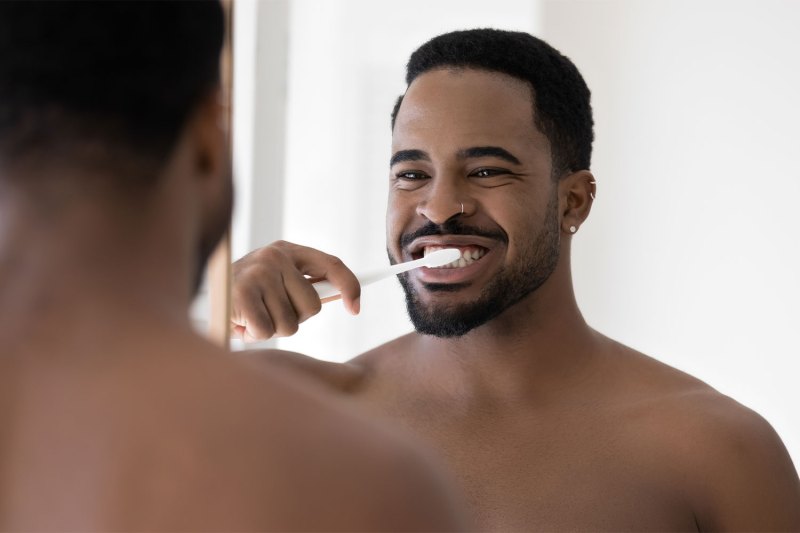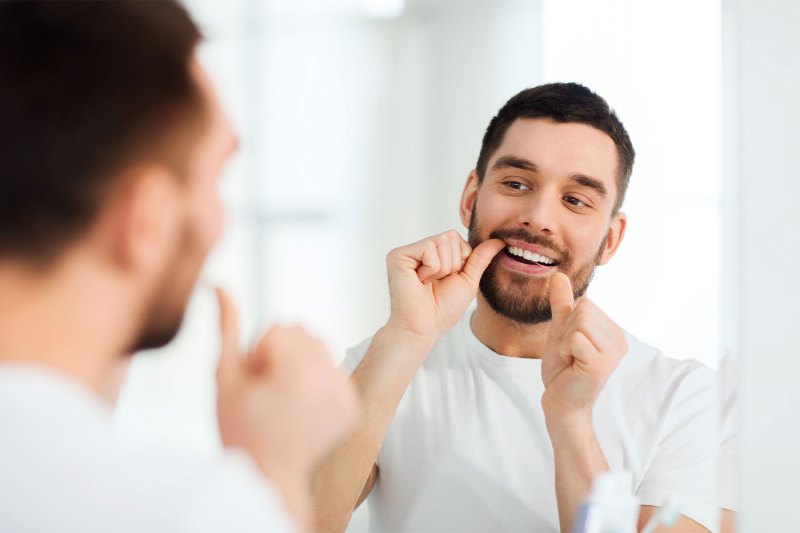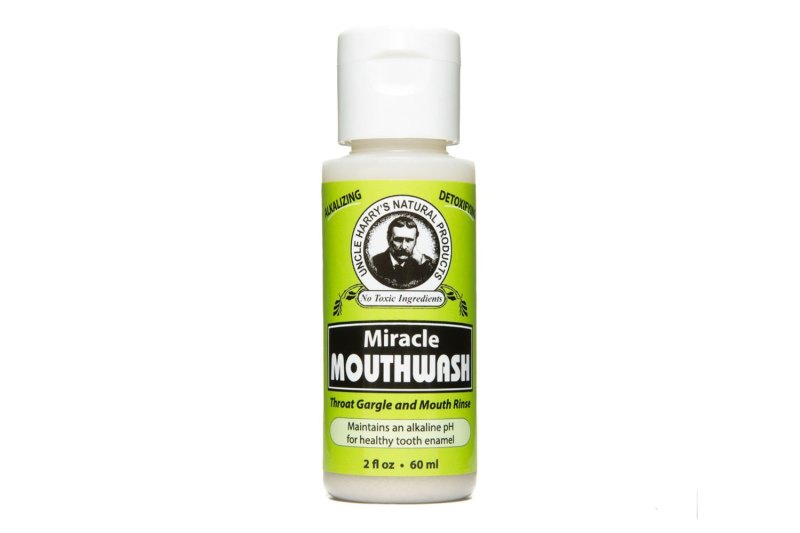When you’re a kid, dental care boils down to one simple task: don’t get cavities. Following this directive is equally simple. Brush your teeth twice a day, go light on soda and candy, and put up with an annual dental cleaning. After which, if your dentist is cool, you go home with a lollipop. (Sugar-free, of course.)
But looking after your teeth as an adult is more complicated. (Sigh.) Even if you’ve avoided cavities your whole life, you may find yourself unaccountably stricken with tooth decay. You might also encounter gum recession, halitosis, teeth shifting position, or tooth pain with no discernible source.

None of this means you’re doing anything wrong. It just means you need a little more education on what to do right. Just as your muscles and back need additional recovery time as you get older (and by older, we mean reaching your 30s), your teeth need some extra TLC to stay healthy.
And in case you’re wondering, yes it’s worth the trouble. Here’s what can happen if you neglect your dental health:
We spoke with a pair of dental care experts to get the lowdown on how to take care of your teeth during adulthood. Keep reading for everything you need to know about keeping your chompers in tiptop pearly white condition.
To start, let’s review the most common problems that affect your dental health as an adult.
Wear
Even if you brush religiously, your teeth are still vulnerable to wear and tear — after all, you use them pretty frequently. According to Dr. Jon Marashi, “This is thanks to thinning of tooth enamel that happens as we get older. This thinning process makes it a lot easier for teeth to chip or crack, as well as turn gray or yellow in appearance. “While people believe this is simply caused from enjoying too much coffee and red wine,” says Dr. Marashi, “this can actually be a sign of internal staining. The internal color of the tooth turns to a dark yellow/orangey brown shade over time, and as your enamel thins out, more of this dark internal color will show through.”
Problems with Old Dental Work
Just like your car or your computer, fillings and other dental work have a shelf life. Many past procedures need to get replaced once they’ve reached the 15-year mark.
Movement of Teeth
Teeth are not static. Age-related issues like gum recession, jaw bone movement, teeth grinding, and even thinning of the lips all play a role in your teeth moving and shifting. And the problem isn’t just cosmetic. “Often, we see teeth moving will lead to crowding or spacing,” says Dr. Vanessa Creaven, co-founder of Spotlight Oral Care. Crowding and spacing can lead to pain as well as increased decay.
Gum Inflammation and Recession
As we get older, our lives get more complicated. Being busy and having increased responsibilities can lead to more stress, and stress plays a major role in the health of your gums. Not only does inflammation cause your bums to bleed easily, and sometimes causes pain when brushing, but it can also lead to gum recession, which makes your teeth more vulnerable to decay and even falling out.
Mouth Ulcers
Caused by erosion of the mouth’s delicate tissue, mouth ulcers can result from “trauma” like biting the inside of your cheek, as well as dental fillings and or fractured teeth. In a healthy mouth, these ulcers will resolve by themselves in about a week. But if your oral health is less than optimal, or you have age-related risk factors like iron deficiency or autoimmune conditions, they can easily become infected, causing severe pain and leading to more serious issues.
Bad Breath
No matter how good of oral hygiene you practice, halitosis (as it’s clinically known) becomes more of a problem as you get older. This is partly due to increasing decay and buildup of plaque over time (a particular issue for adults who avoid the dentist), but it also results from the salivary glands getting less effective as we get older. Saliva is a natural mouth cleanser, secreting immune cells and antibodies that wash away bad bacteria. With less saliva circulating as we age, we have less natural ability to prevent the sulfurous odor of bacteria trapped between the teeth and hiding below the tongue.
Age is just one risk factor for oral health. Another risk factor is found in the ingredients commonly found in oral care products. Surprisingly, many mainstream dental health products can actually cause as much tooth damage as they prevent. Just a few of these include:
- Sodium Lauryl Sulphateis or SLS: a foaming agent that is associated with irritation and inflammation, and severely exacerbates mouth ulcers.
- Propylene Glycol: an additive included in toothpaste as a “wetting agent,” it’s also one of the active components in antifreeze. Needless to say, this is definitely not something you want in your mouth, says Dr. Creaven. “It can be rapidly absorbed through the skin, with prolonged contact leading to brain, liver, and kidney abnormalities.”
- Triclosan: this antibacterial and antimicrobial chemical has been banned from hand soaps and body washes since 2017… so why would you want it in your toothpaste? “During studies in animals, it has been linked to things like cancer and altered hormones,” says Dr. Marashi. “Because nothing is definitive around this ingredient, many consumers are choosing to just avoid it completely.”
- Diethanolamine or DEA: This ingredient makes your toothpaste creamy and counteracts the acidity of other ingredients. It also happens to be a skin irritant, and may react with other ingredients to form a carcinogen that is super easy for the sensitive tissues in your mouth to absorb. “This ingredient should never be part of your oral care formulations,” cautions Dr. Creaven.
- Phthalate and BPA: This toxic chemical has been linked to causing reproductive issues, lowered immunity, and neurological problems, as well as an increased likelihood of Alzheimer’s disease, metabolic disease, type 2 diabetes, cardiovascular disease, prostate health…need we go on?
- Alcohol: One of the most common ingredients in mouthwashes, alcohol converts in the oral cavity to a carcinogen known as acetaldehyde. “Frequent use of alcohol-based mouthwashes has been linked with increased incidences of oral cancer and cellular changes within the oral cavity,” says Dr. Creaven, “a high price to pay for a quick rinse.”
- Microplastics: If you follow sustainability research at all, you know the devastating effect that microplastics are having on the health on land, water, and wildlife. “When animals fill their stomachs with microbeads, they can spread the plastic up the food chain, which can lead to contamination of the fish we eat,” says Dr. Creaven. “Once in the environment, microbeads are almost impossible to remove, so imagine what they would do to your body?

What You Can Do
To diminish the effects of wear and tear on your teeth, Dr. Creaven recommends practical measures like reducing consumption of staining substances, such as coffee, chewing gum, and (duh) cigarettes or other tobacco products. Also using a toothpaste for rebuilding teeth that targets this issue is really helpful. And believe it or not, reducing stress through mindfulness and other measures that promote mental health significantly contribute to the health of your teeth.
To prevent the negative effects of shifting teeth, look closely for signs of movement, and don’t ignore it if you feel a difference in your teeth position or bite. Wearing a retainer or an aligner will help keep your teeth where they belong.
Of course, there’s one very practical measure for preventing all these problems: Visit the dentist. Dr. Creaven says at her practice, she is entirely acquainted with all the excuses adults find to avoid this basic healthcare measure. They’re too busy to schedule, the appointment slipped their minds, they forgot to schedule a follow-up.
“Attending your dentist or hygienist is easy to delay,” she acknowledges, “but they are instrumental in diagnosing any issues at an early stage to avoid needing unnecessary treatment.” The more you put off or miss appointments, the more damage will accumulate, leading to greater risk of oral disease. She strongly advises booking follow-up appointments each time you leave the dentist, to ensure that you don’t “accidentally” put it off.
When you do visit the dentist, don’t just grin and bear it. “It’s really important to discuss your own individual needs,” says Dr. Creaven. “Oral health is so individual and like other aspects of health, there is a genetic background to take into account, as well as social backgrounds. Be honest with your dentist and ask them what your own individual risks are how you can prevent them to avoid long-term damage.”
Dr. Marashi adds, “You should be asking what you can do to prevent any major issues down the road. It’s not exciting, but regular maintenance — both at home and through quarterly cleanings in-office — is critical.”
Another obvious measure that we all find reasons to avoid: Flossing. Dr. Creaven assures us that it really does play a big role in supporting oral health. “Flossing daily is the most important thing to do to promote good gum health,” she declares. And as it turns out, healthy gums benefit more than just your teeth. “Good gum health is associated with better heart health and better control of blood sugar.”
In addition, it’s important to be smart about what you use to clean your teeth. To easily avoid the risky ingredients listed above, Dr. Creaven recommends looking for products that are labeled vegan friendly and not testing on animals — these two factors indicate that the product is biocompatible for people as well as the environment. (We’ve listed a few of our favorites below.)
Finally, Dr. Creaven says those fancy toothbrushes are actually a worthwhile investment. “Using a sonic brush is a game changer and has been shown to be more effective at removing plaque. it’s a smart way of brushing, basically doing all the work for you.”
Our Picks for Healthy Dental Care
Buy at Bite

Not only is this all-natural toothpaste super sustainable (the glass jar cuts down on plastic waste), but it also puts the kibosh on the mess and hassle of the traditional toothpaste tube. Just crunch a tablet in your teeth and brush — the powder instantly converts into a mild foam that brightens your smile and leaves a subtle minty taste behind.
Buy at Uncle Harry's

Swishing this plant-based, alcohol-free mouthwash for 30-60 seconds is an exercise in personal strength — the taste will put hair on your chest — but it’ll leave your teeth, gums and tongue feeling like they’ve just been powerwashed. So effective is this mouthwash that some swear by it as a cure-all for seasonal illness like sore throat and sinus infection.
Buy at Spotlight Oral Care

The ultra-clean ingredients in this toothpaste remineralize teeth weakened by age, stress, and other health factors, making them look whiter as well as strengthening them for the long haul.
Buy at Byte

The at-home dental aligner market is booming right now, but we like this brand for its doctor-directed care, FDA-approved technology, and — best of all — professional results at half the time and cost of its competitors. Oh, and every subscription helps Byte provide free tele-dentistry to students, families, and teachers who have trouble accessing affordable oral healthcare.


